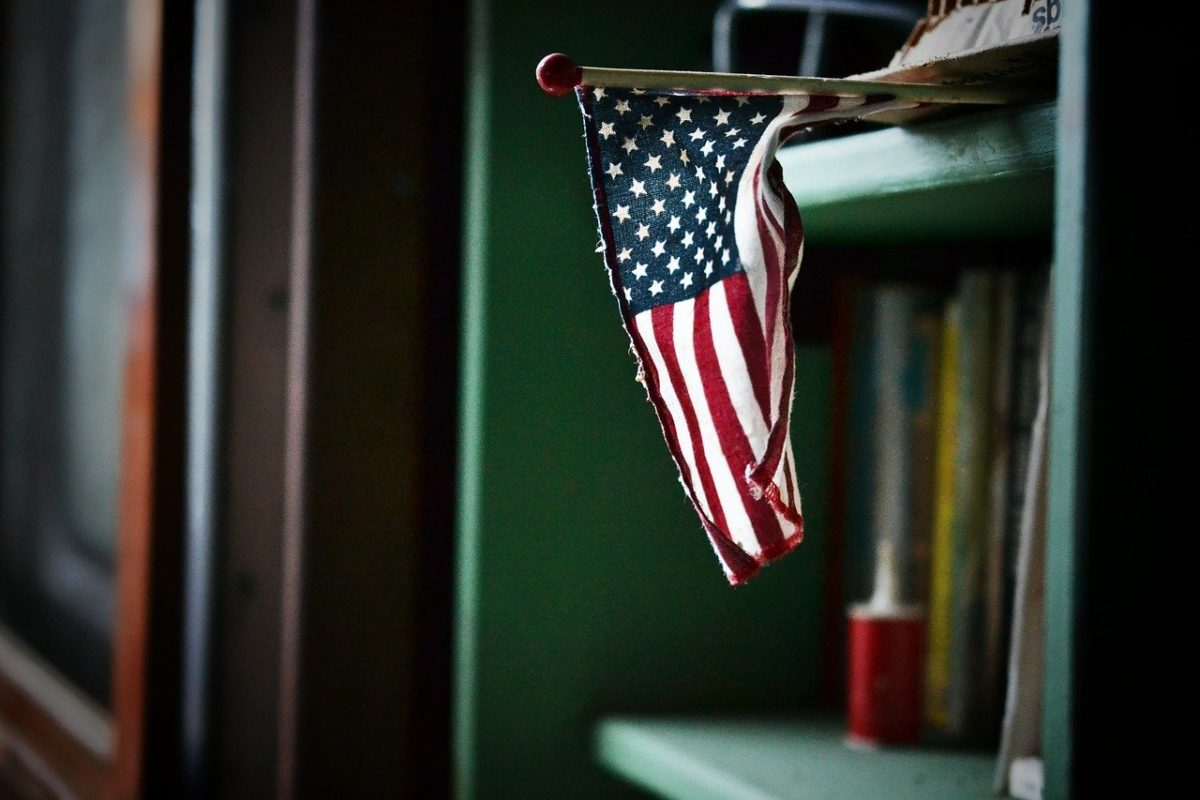By Madison Breshears, 1L Research Assistant
On a summer afternoon in 1966, Sidney Street was listening to the radio in his Brooklyn apartment when he heard James Meredith had been shot.[1] The well-known civil rights leader had been hit by a sniper’s bullet in Mississippi during his lone march through the South. Street recalled saying the words “they didn’t protect him” to himself as he approached his bureau. Street, an African American World War II veteran and bronze star recipient, removed his neatly folded 48-star American flag from its drawer and carried it down to a nearby intersection. He laid a piece of paper on the sidewalk before placing the still-folded flag down and igniting it with a match.[2]
When police arrived on the scene, a small group had gathered around Street and his smoldering flag. When asked whether it belonged to him, Street responded, “Yes; that is my flag; I burned it. If they let that happen to Meredith, we don’t need an American flag.”[3] Street was subsequently charged with violating a New York statute making it a misdemeanor to publicly mutilate, deface, defile, defy, trample upon, or cast contempt upon an American flag either by words or acts.[4]
Flag burning became a subject of popular and legal controversy in the 1960s. Following numerous flag burnings in protest of the Vietnam War, Congress enacted the Flag Protection Act of 1968, the first flag protection act of general applicability.[5] During the 20-year life of the Act, the Supreme Court confronted the flag burning issue only three times—one of which was the case of Mr. Street.[6] After numerous appeals, all of which upheld his conviction, [7] the Supreme Court granted certiorari, and the argument was heard on October 21, 1968.[8]
Street v. New York is often forgotten among the flag burning cases heard by the Supreme Court. This is likely because the Court declined to consider the constitutionality of flag burning in its opinion. Nevertheless, the Court ruled in Street’s favor, finding that the statute’s speech restrictions violated the First Amendment.[9] The Court reasoned that Street’s conviction may have rested on his words, “we don’t need an American flag,” or his act, setting fire to the flag on the street, or some combination of the two. Because the New York statute prohibited both, the majority found that it was impossible to determine which, the words or the act, were the basis for the conviction.[10] Since the speech-based theory of criminal liability violated Street’s First Amendment rights, the judgment was reversed.[11]
Chief Justice Warren’s dissent in Street harshly criticized the majority.[12] Warren believed that the primary constitutional question of the case was unambiguously flag burning, and he insisted that the majority had skirted its responsibility in failing to rule on the issue.[13] Notwithstanding Warren’s objections, for the next two decades, the Court would continue to pursue a strategy of obfuscation when confronted with flag desecration statutes. In 1975, for instance, the Court held in Spence v. Washington that the placement of a peace sign on the flag was an independent expression protected by the First Amendment, but once again failed to decide on the constitutionality of the flag desecration statute the case had implicated.[14]
The Court did not answer the flag burning question directly until 1989 when it delivered its opinion in Texas v. Johnson. In Johnson, the Court held that flag burning constitutes symbolic speech and therefore is protected by the First Amendment.[15] Analyzing the communicative nature of the act, the Court concluded that the First Amendment protected flag burning and other conduct that was intended to convey a particular message.[16] The Court also held that state interests in preserving the integrity of national symbols and preventing breaches of the peace were not sufficiently compelling to overcome the competing interest in free expression.[17]
Thereafter, Congress quickly passed the Flag Protection Act of 1989 to mitigate the impact of Johnson’s precedent. The Act attempted to shift the focus of the statute to protect the broad physical integrity of the flag rather than proscribe its intent-driven desecration.[18] Congress’s effort, however, was rendered null when the Court struck it down in 1990 in its ruling in United States v. Eichman.[19] Eichman held that national interest in maintaining respect for the flag was not sufficient to outweigh the restriction upon free expression implicit in the statute.[20]
Flag burning has remained a hotly debated issue despite the Court’s conclusive decision in Eichman. The notion of amending the Constitution to prohibit flag burning has long been popular among Americans; surveys have suggested that as many as 56% of Americans support the idea.[21] This public support may help explain the many historic attempts by Congress to pass such amendments, though, as of yet, none have succeeded.[22] Critics of the current state of the law point out that a strict, textualist interpretation of the First Amendment protects “speech” and “press” but distinctly lacks protection for “expression.”[23] Richard Posner insists “nothing in the text of the Constitution, or in the eighteenth-century understanding of freedom of speech, supports the proposition that prohibiting the burning of the flag infringes free speech.”[24]
On the other hand, originalists note the sixteenth and seventeenth-century conflation of symbolic and verbal expression with regard to laws like libel, obscenity, and blasphemy.[25] Proponents of protections for flag burning suggest that the meaning of “speech and press” at the founding connoted a broad and well-understood reference to expression.[26] Supporters of this view further point to the abundance of symbolic political demonstrations during the founding era—colonists protested the Stamp Act, for example, by adorning a “liberty tree” with effigies of demons and politicians, including the British Prime Minister, which were later paraded around town, beheaded, and set on fire.[27] Surely, they reason, a culture which so frequently employed such tactics for political and social purposes would have viewed symbolic expression as entitled to as much, if not more protection as they did speech and press.[28]
Flag burning is a particularly confounding enclave of First Amendment philosophy, even for those who might consider themselves free-speech absolutists. For many, flag burning flies in the face of deeply held sentiments of national unity, respect for military service, and constitutional values currently interpreted to protect its practice. Street v. New York demonstrates how far First Amendment protection has come since 1969, despite seemingly little consensus being reached regarding its interpretation.
[1] Street v. New York, 394 U.S. 576, 578 (1969).
[2] Id.
[3] Id. at 579.
[4] Id.
[5] John R. Luckey, Flag Protection: A Brief History and Summary of Recent Supreme Court Decisions and Proposed Constitutional Amendments, C.R.S., 1 (2009).
[6] Id.
[7] 394 U.S. at 579.
[8] Id.
[9] Id. at 578-79.
[10] Id. at 590.
[11] Id.
[12] Id.at 595 (Warren, J., dissenting).
[13] Id.
[14] Luckey at 1.
[15] Texas v. Johnson, 491 U.S. 397 (1989).
[16] Id. at 404.
[17] Id. at 410.
[18] Luckey at 2.
[19] 496 U.S. 310 (1990).
[20] Id. at 318.
[21] Public Support for Constitutional Amendments on Flag Burning, Gallup (2006).
[22] Luckey at 3.
[23] Eugene Volokh, Symbolic Expression and the Original Meaning of the First Amendment, 97 Geo. L.J. 1057, 1057 (2009).
[24] Id. at 1058.
[25] Id. at 1059.
[26] Id.
[27] Id. at 1060.
[28] Id.


